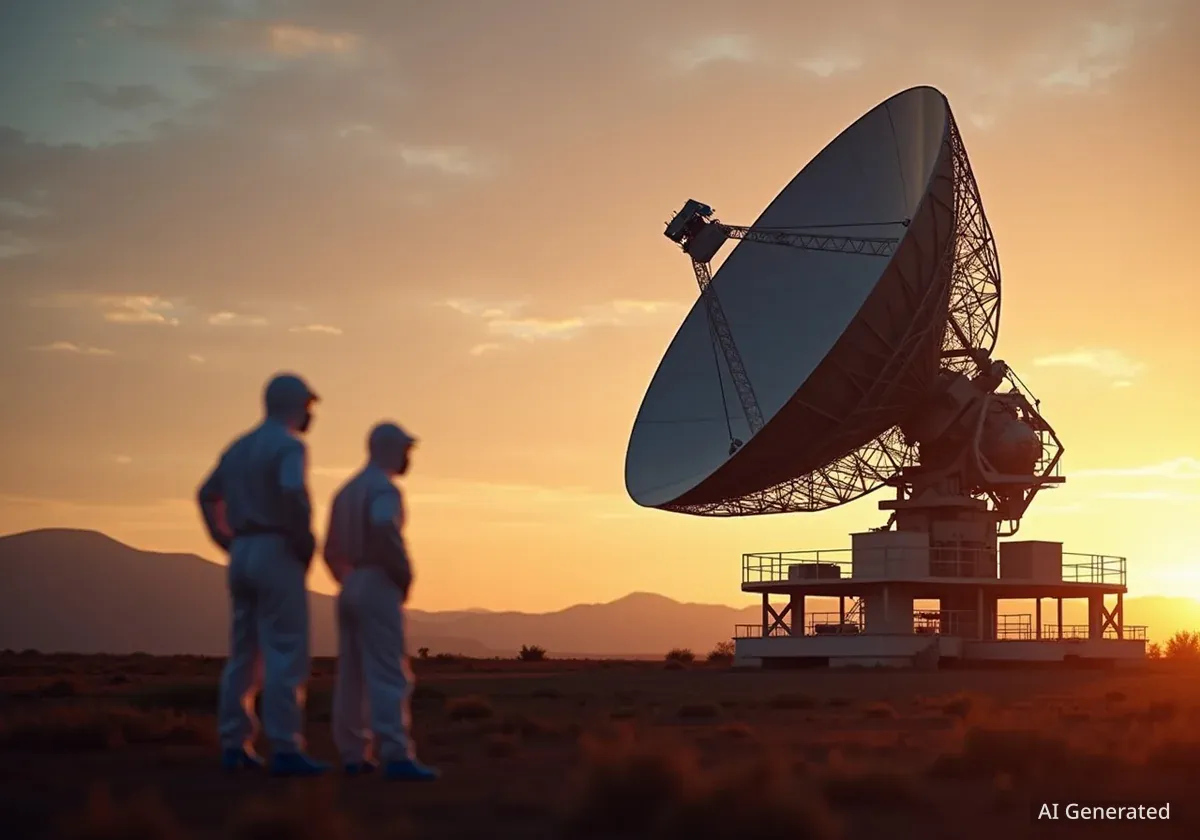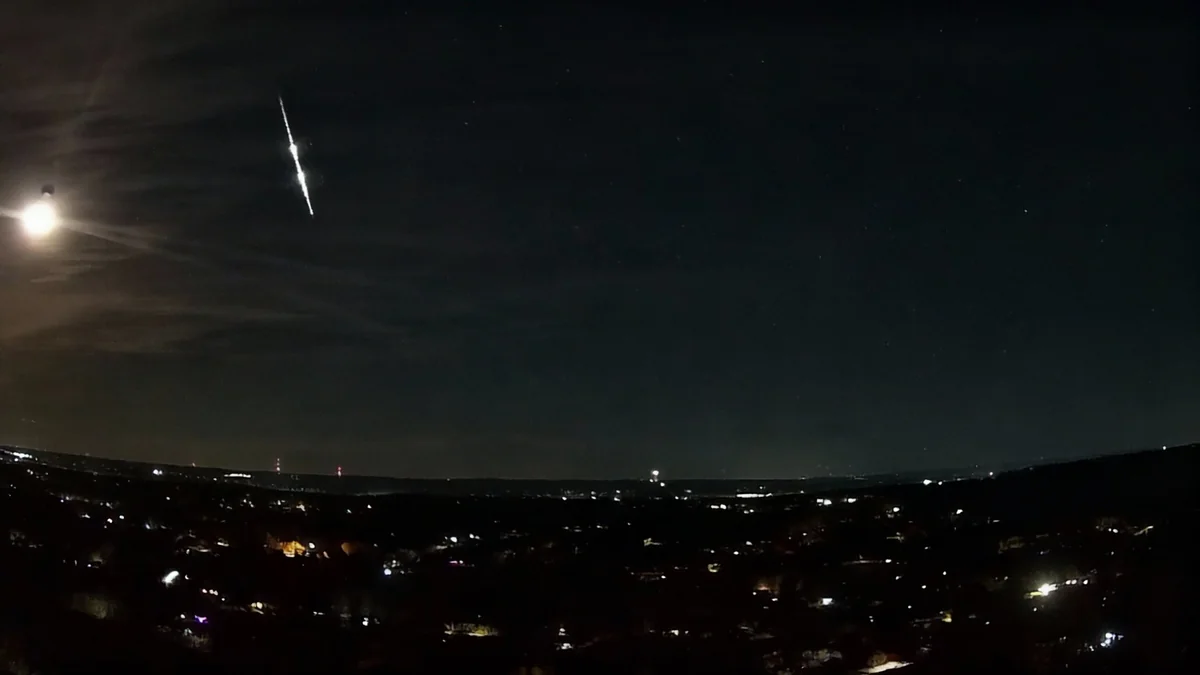Mission controllers at the European Space Agency (ESA) are conducting extensive simulations to prepare for the upcoming launch of Sentinel-6B, a critical satellite designed to monitor global sea levels. The training exercises, which began in early September, are designed to ensure the mission team can safely guide the spacecraft through its initial, high-stakes phase in orbit.
Key Takeaways
- ESA's mission control is running a simulation campaign for the Copernicus Sentinel-6B satellite launch.
- Sentinel-6B will continue a decades-long record of monitoring sea-level rise, a key climate indicator.
- The mission involves a complex operational handover from ESA to Eumetsat after the first three days.
- The satellite is a twin of the Sentinel-6 'Michael Freilich' but is being managed by a largely new team.
Intensive Training for a Critical Mission
Teams at ESA's European Space Operations Centre (ESOC) in Germany are in the final stages of a comprehensive training program. The 'simulation campaign' is a series of realistic drills that test the team's ability to handle the Launch and Early Orbit Phase (LEOP). This is the period immediately following launch, which is one of the most demanding phases of any space mission.
During these simulations, controllers practice responding to a wide range of potential problems. Scenarios include software malfunctions, critical system failures on the satellite, and unexpected issues with ground support infrastructure. The goal is to prepare the team to operate effectively under pressure and make correct decisions in real-time.
What is the Copernicus Programme?
The Copernicus Programme is the European Union's Earth observation program. It provides accurate, timely, and easily accessible information to improve environmental management, understand and mitigate the effects of climate change, and ensure civil security. The Sentinel satellites are the primary data sources for this program.
A large, collaborative group of over 100 individuals forms the mission control team. This 'team of teams' includes satellite operations specialists, flight dynamics experts, and software engineers from ESA, alongside personnel from partner agencies and the satellite's manufacturer.
A Proven Design with a New Team
Sentinel-6B is scheduled to launch on a SpaceX Falcon 9 rocket from Vandenberg Space Force Base in California by the end of the year. The satellite is nearly identical to its predecessor, Sentinel-6 'Michael Freilich', which was launched five years ago. It shares the same design, will use the same type of rocket, and will launch from the same location.
Despite the hardware similarities, the human element has changed significantly. "One main aspect is that the team has changed a lot since Sentinel-6, both at ESOC and on the project and manufacturer side," explained Eduardo Zornoza, Spacecraft Operations Manager for Sentinel-6B. "For this reason, we’ve scheduled an adequate number of sessions to get everyone up to speed and familiar with the satellite."
Mission Objective
Sentinel-6B will use a radar altimeter to measure the distance from the satellite to the ocean's surface with millimeter precision. This data continues an unbroken record of sea-level measurements that began in the early 1990s, providing essential information for climate science.
The continuity of this data is crucial for tracking climate change. Pierrik Vuilleumier, the ESA Project Manager, highlighted the mission's importance.
"Copernicus Sentinel-6B will become altimetry constellation reference mission after commissioning, building upon the excellent results of Sentinel-6 ‘Michael Freilich’ to maintain the sea level rise record started in the 1990s. This essential climate variable is at the core of the international collaboration with NASA, NOAA, EUMETSAT and CNES on Sentinel-6."
Complex Handover Procedure
The operational plan for Sentinel-6B involves two key European space organizations. ESA's team at ESOC will manage the critical LEOP phase. During the first three days in orbit, they will be responsible for deploying the satellite's systems and performing two crucial maneuvers to adjust its trajectory.
After this initial phase, responsibility will be transferred to Eumetsat, the European Organisation for the Exploitation of Meteorological Satellites. Eumetsat will oversee the final orbit acquisition, the commissioning phase where all instruments are tested, and the satellite's routine daily operations. Eumetsat will also be responsible for distributing the vital sea-level data to scientists and organizations worldwide.
This division of labor allows each agency to focus on its area of expertise: ESA on the complex launch and early operations, and Eumetsat on long-term meteorological satellite management and data dissemination.
Global Network and Final Preparations
Communicating with Sentinel-6B requires a specific set of ground stations due to its unique orbit. Unlike many Earth observation satellites that fly in a sun-synchronous path over the poles, Sentinel-6B has a lower inclination orbit.
"This isn’t a typical Earth Observation mission," Zornoza noted. "Contrary to other Sentinel missions... Sentinel-6B doesn’t go as far North or South."
To ensure constant contact, the mission will rely on a carefully selected network of ground stations:
- Punta Arenas, Chile: Provided by the Swedish Space Corporation (SSC), this station covers the Southern Hemisphere.
- Kiruna, Sweden: An ESA-owned station providing coverage in the Northern Hemisphere.
- Inuvik, Canada: Also operated by SSC, this station supplements northern coverage.
The final step before launch is a full-scale dress rehearsal. This exercise will connect the mission control team at ESOC directly with the launch teams from ESA, SpaceX, and industry partners at the Vandenberg launch site. During this rehearsal, the team will receive live data from the satellite through an umbilical cable, which is disconnected just before liftoff.
Franco Zurletti, the Deputy Spacecraft Operations Manager, recalled the challenges of the previous launch. "The launch of Sentinel-6 happened during the pandemic, which made coordination extremely challenging," he said. "With Sentinel-6B, we hope we can finally enjoy it." Once this final test is complete, the team will be fully prepared to support the launch of this important climate monitoring mission.





